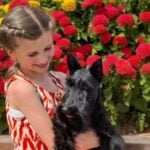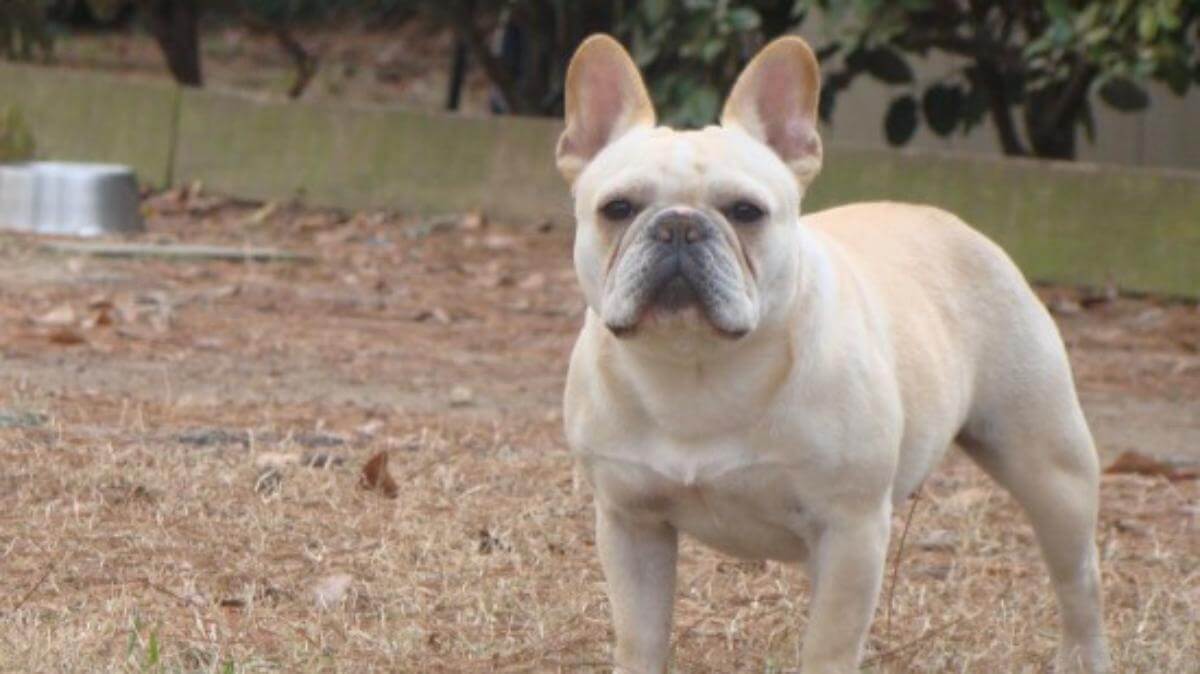
Home » Evaluating the French Bulldog: A Review for Judges

This article was originally published in Showsight Magazine, March 2013 issue.
Breeders and exhibitors of French Bulldogs are horrified by the surge in French Bulldog popularity as illustrated by its current rank of number 14 and the large number of dogs entered at the Westminster Kennel Club show. Tis means many more French Bulldogs in the show ring and many more judges needed to evaluate them. Breeders and exhibitors are concerned that the quality of judging must keep up with the explosion of Frenchies. Tis article reviews key issues in our breed standard, explaining what some of the challenges are and some of the subtleties are. We breeders and exhibitors ask that you judge the dogs in the ring against the standard. Please do not be swayed by previous wins and reputations. We know the strengths and merits of our breed and truly rejoice when you award the quality before you. Judge the dog on the day as you see it without fear or favor. Let’s start in the ring. It really helps to have a mental image of how a Frenchie should look. Note that words in italics are direct quotes from our Breed Standard.
Your first impression of the French Bulldog should be made by viewing the dog from the side as he is stacked on a table. Te dog should be compactly built with legs and body showing strong muscular development and heavy bone. Te head is supported by a thick and well arched neck. Tere is a slight fall close behind the shoulders and narrowing at the loins. Te tail is either straight or screwed (but not curly) it is short and hung low. Te topline has a slight rise over the loin. Let’s explore the “slight rise over the loin.” Close behind the shoulders there should be a slight downward curve to the back gradually rising to the top of the loins. If you feel along the spine you will note that the vertebrae begin to change direction at the first lumbar vertebra, just past the last rib. It is a gentle rise. If the rise begins before the first lumbar then you have an incorrect camel back. A sway back is also incorrect as it starts at the loin and goes straight uphill to the tail. Of course, a dog that has a flat back without the distinctive rise over the loin is incorrect. It is very important to understand the top line. Please take the time to evaluate it properly as it is vital to the silhouette. Te large square head with the distinctive bat ears is made up of many components that come together to typify our breed and its personality.
Move to the front of the table to view the head. Te head should be large and square. Te top of the head between the ears is flat with the forehead slightly rounded. Te standard says the head should be in harmony with the short heavy body. Te eyes should be round and dark and set low on the head without any visible white when looking straight ahead. Tey have an expression of intelligence and curiosity. A bulging eye or almond shape is not desirable. In lighter colored dogs a lighter eye is acceptable – but never a “light” eye. Te bat ear is distinctive for the breed – anything other than a bat ear is a disqualification. Te ears are broad at the base and elongated, open to the front and have rounded tips. Tey are set high on the head and carried erect. Te ears are properly set at the 11:00 and 1:00 o’clock position. Judge the ears as the dog is moving and when he returns to you. It is a disservice to the dog to attempt evaluation of the ears while on the table.
Te muzzle should be broad, deep and well laid back with the muscles of the cheeks well developed. Te standard says the under jaw is deep, square, broad, undershot and well turned up. Use your hand to feel the curving sweep of the jawline. Tere should be a square appearance to the head not round. Shallow cheeks or narrow jawlines are not desirable. Be careful in examining the mouth. Use your thumbs to flip up the lips to view the undershot bite. Don’t attempt to pry the mouth open. When the mouth is closed, neither the tongue nor teeth should be seen. Flews black, thick and broad, hanging over the lower jaw at the sides, meeting the underlip in front and covering the teeth, which are not seen when the mouth is closed. A wry mouth is undesirable as it will distort the alignment of the jaw and spoil the appearance of the head. Te nose is short and has a soft roll over the top with a well-defined stop. Te nose is black and other than black is a disqualification. In the case of lighter colored dogs a lighter nose is acceptable but not desirable.
Te forelegs are short, stout, straight, muscular and set wide apart. Te feet are compact. Te chest is broad and deep. Te space between the front legs, chest and the ground should be almost square.
Strong muscular hind quarters are necessary for sound movement. Te rear legs are longer than the front legs with hocks well let down. A too straight stifle is a defect that creates a stilted gait in the rear movement. A correct gait is graceful with reach and drive. Te hind feet track inside the front because the front is broader than the rear. It is undesirable that the rear feet toe inward or are cow hocked. Both issues hinder proper movement. Movement is important in our breed. If a dog cannot move forward in a graceful manner with reach and drive it may indicate structural issues.
Te coat is moderately fine, brilliant, short and smooth. Skin is soft and loose, especially at the head and shoulders, forming wrinkles. Acceptable colors are all brindle, fawn, white, brindle and white, and any color except those which constitute disqualification. Colors that are unacceptable are solid black, mouse, liver, black and tan, black and white and white with black (these are disqualifications). Black means black without a trace of brindle. Tese DQ colors can be registered with AKC and have entered the show ring. If you think you have a DQ color before you, pay close attention to the eye and nose color. In the case of a mouse or blue color they will not have a black nose or a dark eye. Tere is a weight limit of 28 pounds. If you suspect that the dog might be too heavy, please call for the scales. Te French Bull Dog Club of America Judges Education Committee does not recommend picking up the dog. It is not possible to determine whether a dog is one or two ounces over the limit or under the limit by lifting it.
Te French Bulldog has a companionable and cheerful disposition. He should be cooperative in the ring—not shy with people nor aggressive toward other dogs. JUDGE THE WHOLE DOG – it is the sum of all its parts. Te standard has been used for descriptive purposes; however, it is not produced in its entirety nor have I covered every aspect of the dog. Tere is a full discussion on evaluating the French Bulldog authored by the FBDCA Judges Education Committee available on the website as a pdf download at http://frenchbulldogclub.or/ about-frenchies/judging-frenchies. Tere is also a CD available that is produced by the Judges Education Committee of the FBDCA. If possible, attend the National Specialty Judges Education Seminar and participate in ringside mentoring. Watch the dogs in 3D and get instant feedback on your questions and concerns.